Fix: ‘Headphone Jack Not Recognized’ in Windows 11
Many people have reported encountering the headphone jack not recognizing issues in Windows 11 when trying to use their headsets. This issue makes their headphones unusable because the computer won’t recognize them. Affected users say that they have tested these headsets on different computers and they worked without problems, so the headphone jack is not the problem. This issue has been typically encountered in Windows 11.
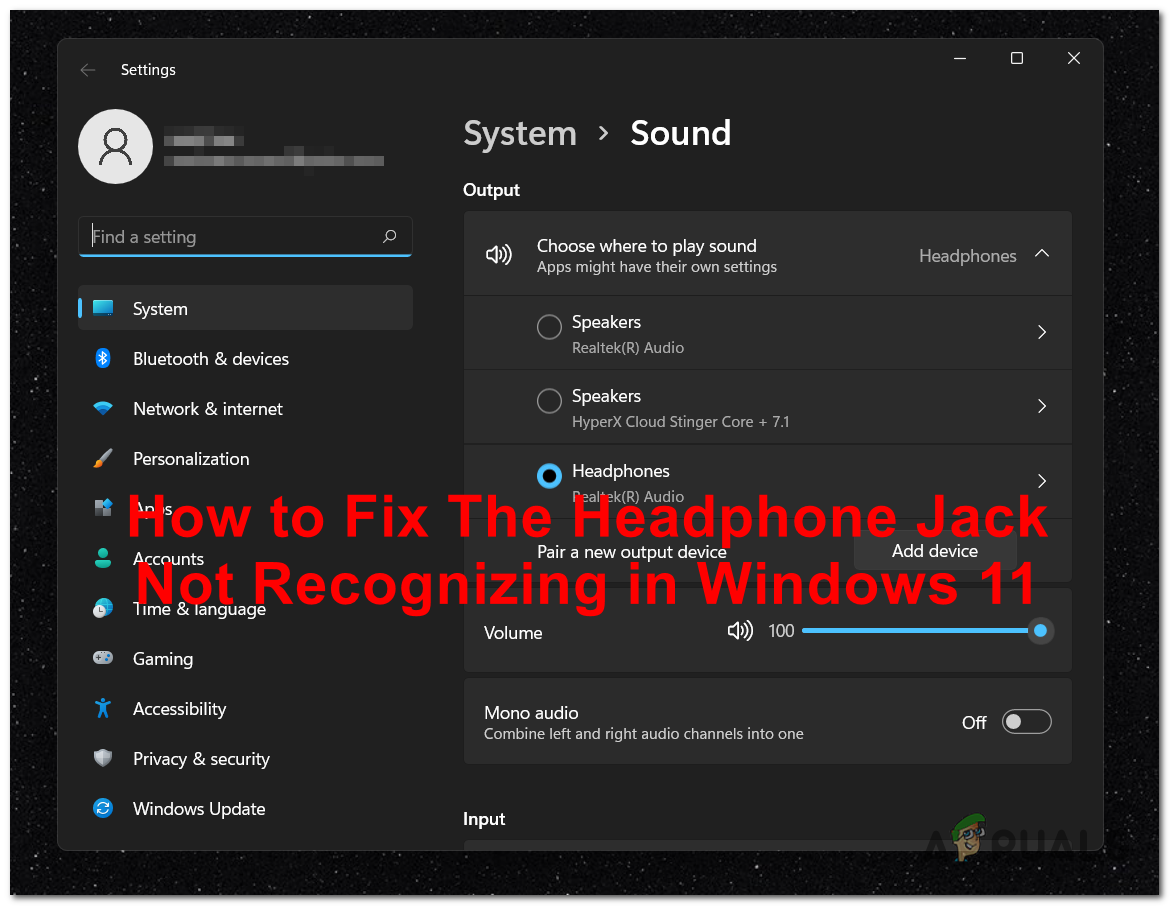
After more and more people have been complaining about this error, we have decided to take an in-depth look into it to see what can cause this issue. Here is a short list of all the possible causes that might trigger this error:
- Windows 11 connection bug – If you’re just getting started with the investigation, you should restart your computer while making sure the broken headset is plugged in. Windows 11 has a widespread fault that causes sporadic interruptions and connectivity problems with previously connected headphones. Simply restart your computer with the headset plugged in to resolve this problem without addressing its underlying causes.
- Audio Conflict facilitated by Maxx Audio PRO – It’s quite probable that if you’re running Waves MaxxAudio Pro software on a Dell computer, your problem is caused by a software conflict between the generic Audio drivers and the collection of specialized drivers that Maxx Audio Pro uses. Open Maxx Audio Pro, turn on Maxx Audio, switch to a different headset, then turn off Maxx Audio once again to resolve this problem.
- Common Windows 11 inconsistency – As it turns out, you have a chance to fix this issue without doing any manual troubleshooting by running the ‘Playing Audio Troubleshooter’ and applying the recommended fix. This method has been successfully used by a lot of affected users and will fix the issue in your case if the problem that makes your headset fail to connect is already covered by a repair strategy included in the troubleshooter.
- Outdated audio driver – As it turns out, you can expect to face this issue if you’re using a severely outdated audio driver migrated over from Windows 10 (or older). If you’re dealing with this particular issue, you can fix this issue by relying on Device Manager to update your current driver and replace it with a newer (fully compatible) equivalent.
- Corrupted audio driver – There are also situations where your current audio driver is affected by corruption and is refusing to accept new device connections. Several users that we’re also dealing with this problem have confirmed that they managed to fix this issue by uninstalling the current driver forcing Windows to switch back to the generic audio driver.
- Sound enhancements are enabled – If you’re experiencing the same kind of issue with multiple headsets and audio devices, your problem is most likely related to the fact that software enhancements are enabled. To prevent this problem from occurring in the future, simply access your sound settings and disable sound enhancements for the problematic headset.
- Missing cumulative update – As it turns out, Microsoft has already released a cumulative update that tackles this issue and ensures that previously connected headsets can be reconnected without the need to restart. The hotfix included in this cumulative update was distributed in March 2022, so you should already have it installed if your Windows is up to date. If not, simply install every pending update to make sure that this hotfix produces its effects.
- System file corruption – Under certain circumstances, you can expect to deal with this issue due to some kind of system file corruption that affects the connection of new playback audio devices. Several affected users dealing with this problem have confirmed that they managed to fix this issue by repair installing or clean installing their Windows 11 system.
Now that you are also aware of all the possible causes of this issue, here is a list of all the methods that people have used in order to fix this Windows 11 issue:
1. Reboot while the headset is connected
If you’re just beginning to troubleshoot the problem, you should first start by rebooting your PC while ensuring that the malfunctioning headset is connected to your PC.
Keep in mind that things work differently on Windows 11 than on Windows 10. On Windows 11, the driver matching only happens immediately after the startup procedure (on Windows 10 this happens dynamically).
If you were to disconnect your headset before plugging it back in, there will be no re-detection until you reboot your PC.
So if you haven’t done this already, make sure that the unrecognized headset is connected to your PC before initiating a restart procedure. Wait until the next startup is complete and see if the problem is now fixed.
Update: It turns out that this behavior is not an intended functionality and will be rectified by a future Windows 11 update.
If your headset is still not getting recognized on Windows 11, move down to the next method below.
2. Override Maxx Audio PRO Settings (if applicable)
If you’re using the Waves MaxxAudio Pro packages on a Dell computer, it’s very likely that you’re experiencing this issue due to a software conflict between the generic Audio drivers and the set of dedicated equivalents that are being used by Maxx Audio Pro.
If this scenario is applicable and you’re not too keen on giving up Maxx Audio Pro, the only workaround that seemed to work for a lot of affected users is to temporarily disable Max Audio before choosing your headset over headphones from the drop-down menu below.
After you do this, you can disable MaxxAudio again and reboot your computer with the certainty that the settings will be kept.
Follow the steps below for the complete instructions on fixing the MaxxAudioPro-generated inconsistency:
- First things first, make sure that Maxx Audio Pro is opened.
- From the home screen of Max Audio Pro, ensure that the Max Audio toggle is enabled.
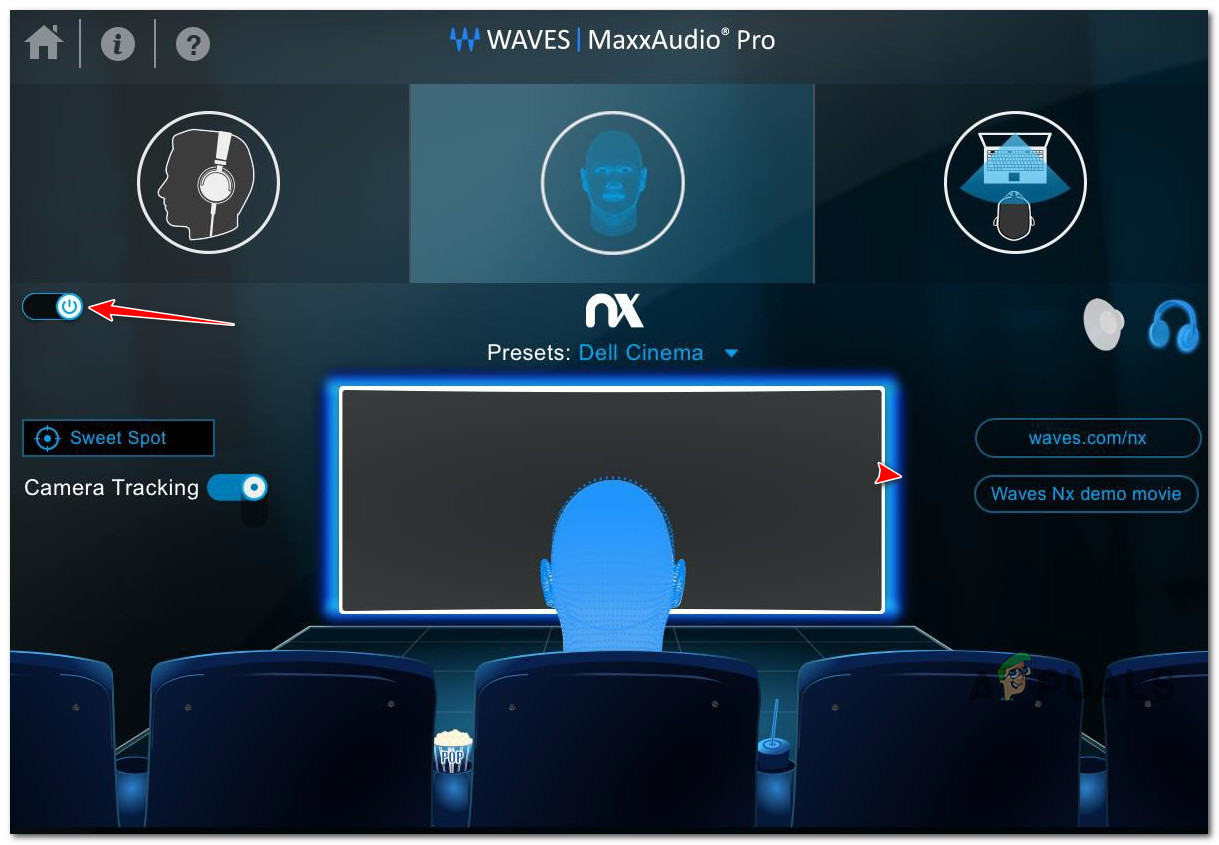
Open Maxx Audio - Once you’ve ensured that the Maxx Audio feature is enabled, go below the equalizer and click on the drop-down menu and choose the headset over headphones.
- Finally, you can disable Maxx Audio once again and close the application without worrying that the settings won’t be kept.
If the problem is still not fixed, move down to the next method below.
3. Run the ‘Playing Audio’ troubleshooter
If the first two methods above didn’t work in your case, the next thing you should do if you’re still encountering this issue is to run the ‘Playing Audio troubleshooter’ and apply the recommended fix. This process can be done from the Windows Settings of your computer and is very easy to access and use.
The Playing Audio troubleshooter will scan the audio devices of your computer that you want, and it will look for problems that might be preventing them from utilizing the headset that you’re currently having issues connecting to Windows 11.
Note: This particular issue will most likely be effective in situations where this problem is rather occurring do an underlying system file-related glitch.
If you haven’t tried running the ‘Playing Audio’ troubleshooter and applying the recommended fix yet, follow the instructions below:
- To enter the Run dialog box, first, click Windows key + R.
- Next, enter “ms-settings:troubleshoot” and click Enter to launch the Settings app’s Troubleshooting menu.
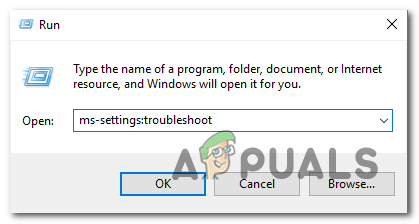
Headset not recognized - Click on Other Troubleshooters in the Troubleshoot tab’s right-hand area of the screen (under Options).
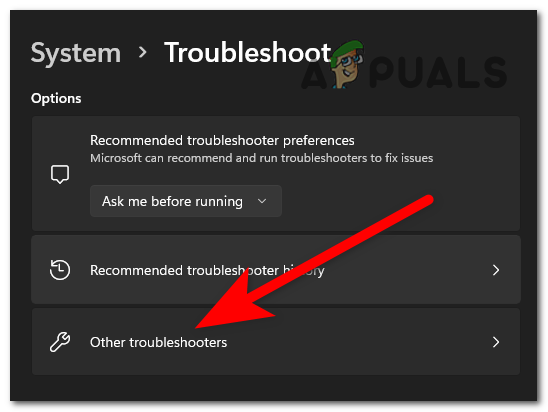
Access the Other Troubleshooters tab - Select Most Frequent from the next selection, then click the Run button next to the Playing Audio option.
- After launching this troubleshooter, be patient and wait till the preliminary investigation is finished.
- Next, choose the audio device that is presently in use as the default.
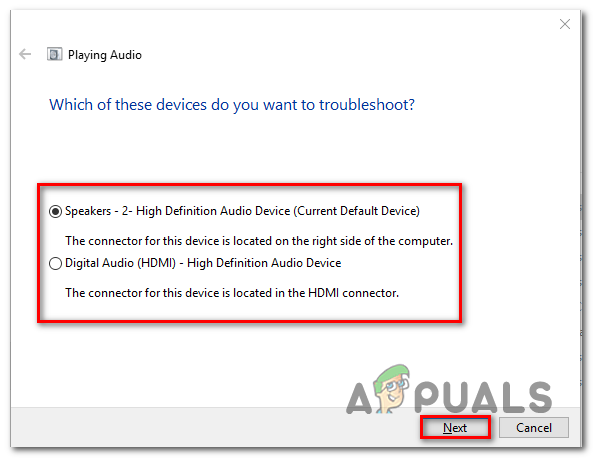
Select the Default audio device - After launching this scan, wait while the tool checks your Audio device for issues.
- If an issue is found, you will be given advice on how to fix it. Click “Yes, Apply fix” or “Yes, Open *menu” to comply with the on-screen instructions, then adhere to the next on-screen steps.
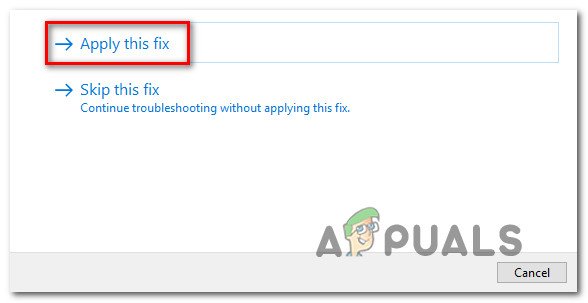
Apply the recommended fix - After your computer has finished starting up again, restart it to check whether the issue has been fixed.
If the problem is still not fixed, move down to the next method below.
4. Update the audio driver
The next thing you should do is make sure that the audio driver you’re presently using is updated to the most recent version. This is a logical follow-up if the troubleshooter method above didn’t help your situation.
In typical situations, a Windows Update subcomponent should automatically update and maintain this driver. However, there are times when an out-of-date audio driver that is incompatible with your current OS version leaves you helpless.
It has been reported by many users that the issue was ultimately resolved when they utilized Device Manager to compel the High Definition Audio Device’s Properties page to update the driver.
If this scenario is applicable, follow the instructions below:
- To enter the Run dialog box, first click Windows key + R. Next, launch Device Manager by typing “devmgmt.msc” and press Enter.
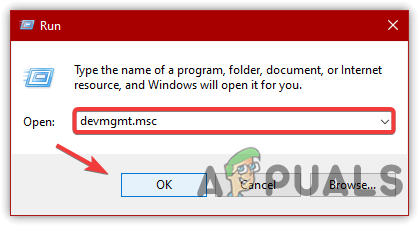
Open Device Manager - If the User Account Control popup asks you to provide admin access, choose Yes.
- After entering Device Manager, extend the Sound, Video, and Game Controllers drop-down menu by navigating through the list of installed applications at the bottom of the screen.
- Select your high-definition audio driver by performing a right-click within the Sound, Video, and Game Controllers menu.
- Select Properties from the context menu that has just been displayed.
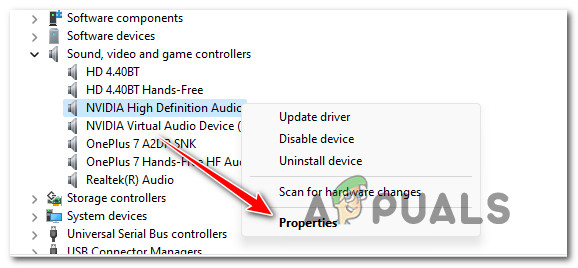
Accessing the Properties menu - From the Properties page, use the top menu to choose Driver, then select the Update Driver option.
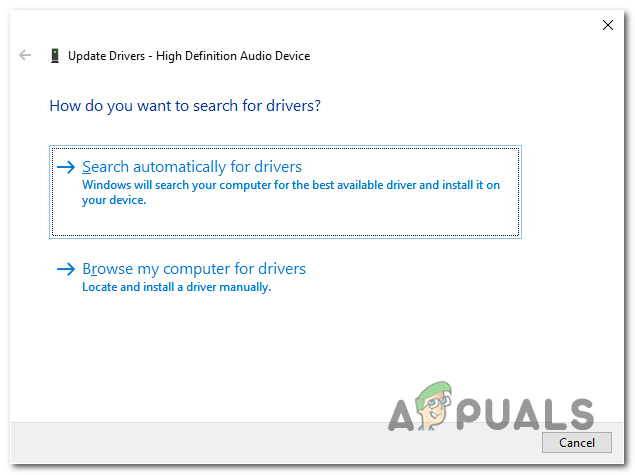
Updating the audio driver - Select Search automatically for drivers on the next page.
- Hold out to see whether a fresh audio driver version is found. If a new version is found, proceed with the installation of the new driver version by following the on-screen instructions.
Note: If Device Manager was unsuccessful in locating a new driver version, go to Windows Update and choose Search for updated drivers. In certain cases, this approach is more successful than a straightforward driver search using Device Manager.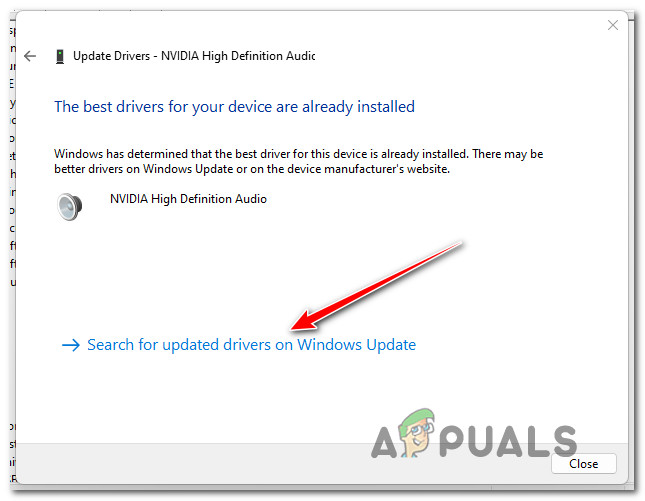
Search for updated drivers - Whether a new audio driver is installed, reboot your computer and check to see if the low audio issue is resolved the next time Windows 11 starts up.
Continue to the next possible solution below if the same kind of issue is still present.
5. Disable software enhancements
The selection of Sound Enhancements that you most likely have enabled should be your next area of the investigation if you’ve gone this far without finding a workable solution.
Numerous Windows 11 users who had been complaining about being unable to connect their headset have said that the problem had been remedied once they turned off all software-powered audio enhancements.
When they turned off all audio improvements, the problem was resolved and they were able to connect their headset in a reliable manner (without having to reboot each time)
The procedure listed below may be used to totally eliminate all enhancements from Sound Properties.
IMPORTANT: A dedicated audio card will probably have its own audio enhancement settings if you’re utilizing one. In this case, deactivating them from the dedicated utility is recommended since doing so will not fix the problem. If you’re using SRS Premium Sound or SRS Premium Sound, uncheck the option next to Audio Enhancement in the dedicated app.
If you want detailed instructions:
- To start, press the Windows key + R to see the Run dialog box.
- After that, enter the word“control” in the Run box and press Enter to launch Control Panel.
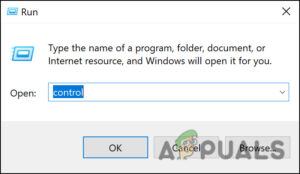
Access control - Within the Control Panel, look for Sound using the search box in the top-right corner.
- Select Sound from the list of options on the next menu.
- Once you’ve reached the Sound screen, make sure the Playback tab is chosen, then use your right mouse button to pick Properties from the context menu when you right-click on the playback device that is giving you trouble.
- Click the Enhancement tab in the horizontal menu on the Properties page of your default audio device, then tick the box next to Disable all improvements.
- To preserve the changes, click Apply at the end.
- Restart your computer and check to see whether the problem has been fixed after the subsequent starting procedure.
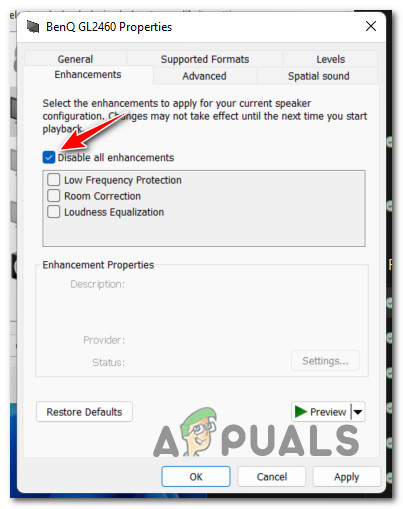
Disabling the sound enhancements
If you’re still having the same issues even after you’ve disabled all software enhancements, then scroll down to the next possible solution below.
6. Manually uninstall the latest audio driver and reinstall it
If you’ve come this far without a viable fix, you should start considering a potential issue that’s rooted in some kind of corruption affecting the audio driver.
This kind of issue is frequently encountered after upgrading from an earlier version of Windows to Windows 11. Depending on the upgrade path you took, it’s possible that your older Windows version’s audio driver was transferred over as well, rather than being replaced by an audio driver adapter for Windows 11.
To get Windows 11 to upgrade your existing audio driver in this situation, you need to use Device Manager.
Since you already tried updating your current driver and it didn’t work, the next thing you should do is uninstall it completely and see if your headset issues will disappear.
Follow the instructions below:
- To bring up the Run dialog box, press Windows key + R. To launch Device Manager, enter “devmgmt.msc” into the text box and click Enter.

Open Device Manager - If the User Account Control (UAC) box prompts you to give admin access while using more strict UAC settings, click Yes.
- After you have finally reached Device Manager, extend the Sound, video, and gaming controllers drop-down menu by scrolling down through the list of various devices.
- Next, right-click on the headset that is not working properly and choose Uninstall device from the context menu.
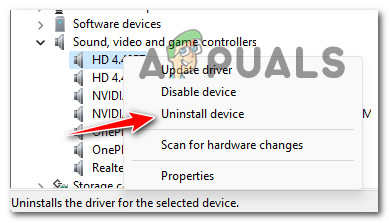
Uninstall audio device - At the confirmation prompt, click on Uninstall once again to finish up the operation.
- Once the audio driver is uninstalled, simply reboot your PC and wait for the next startup to complete.
Note: This action will force your operating system that the audio driver is missing and will force the installation of a generic driver equivalent.
If the problem is still not fixed, move down to the next potential fix below.
7. Update Windows build
Remember that this issue has been largely resolved by a Windows Update that Microsoft delivered at the beginning of March 2022, as several users have verified.
If you have updated every cumulative Windows Update, you should no longer have sporadic headset disconnections and difficulties pairing with certain headset types, according to a few Microsoft specialists.
You should enter the Windows Update component and manually verify that you are using the most recent version of Windows 11 to make sure this is relevant.
The steps listed below should be followed in order to install the most recent Windows 11 updates:
- To launch the Run box, press the Windows key + the R key.
- From the newly displayed window, enter the word “ms-settings:windowsupdate” and click Enter to launch the Windows Update tab of the Settings application.

Access the Windows Update component Note: You could get an account control prompt at this point depending on the UAC settings you previously configured. To allow admin access in this situation, click Yes.
- Click on Check for Updates in the right-hand area of the Windows Update window.

Checking for updates - If a fresh update becomes available, wait for it to download locally before selecting Install Now to do so.
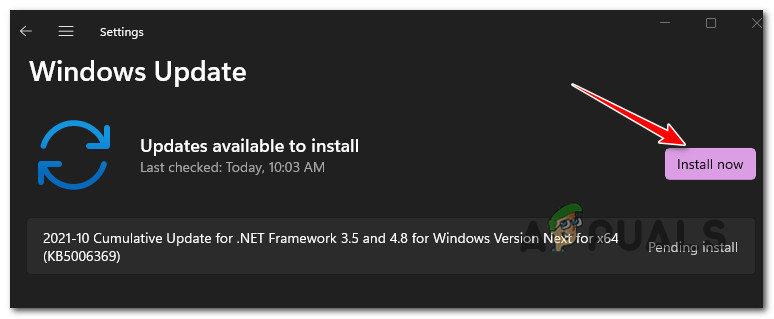
Install all pending Windows Updates Note: Prior to installing any pending update, your computer may need to be restarted. In this scenario, be sure to come back to this screen when the subsequent booting process is finished.
- Restart your computer, then try to run the game that was showing the error to check whether the issue has been fixed.
Continue to the last procedure below if your headset still won’t connect to your Windows 11 installation after you’ve verified that the most recent build is installed.
8. Perform a repair install or clean install
Suppose none of the previous solutions mentioned in this article have been able to help you resolve this problem. In that case, you should consider the likelihood that certain damaged sound dependencies are to blame for your inability to connect your headset.
The best course of action at this point is to simply replace every system file with a counterpart that you know is healthy and unaffected by corruption since many system files in this instance suit the description of the perpetrator.
There are two approaches that you may use to do this:
- Clean install – If you’re searching for a fast remedy, try this. The main disadvantage of clean installing Windows is that, unless you have a backup of your data beforehand, the process will result in the deletion of every personal file and application that is currently kept on the same partition as your operating system. This is because clean installing Windows will let you replace every system file without the need to use compatible installation media.
- Repair install – If you have some spare time, we advise choosing an in-place repair rather than a repair install. Although this procedure is a little more laborious and calls for compatible Windows 11 installation disks, the main benefit is that all your personal files, games, and applications remain intact.





